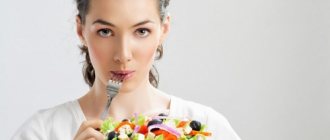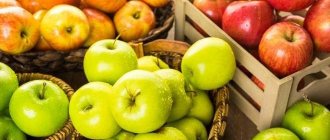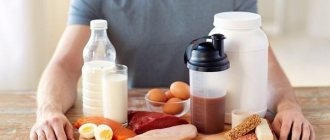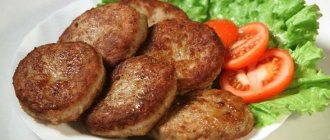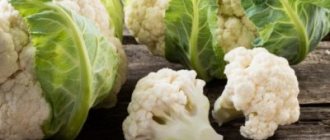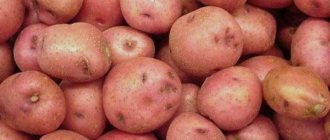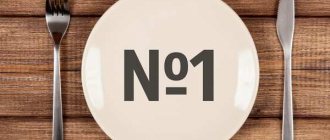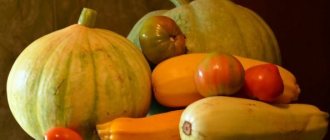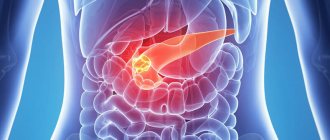General rules
Cholecystitis is an inflammation of the gallbladder of an infectious nature (bacterial, viral, parasitic).
An important reason for the development of this disease is also the stagnation of bile and changes in its composition. There are two forms of the disease: acalculous and calculous cholecystitis , and inflammation can be catarrhal and purulent .
The following symptoms of the disease are characteristic:
- Painful - localization of pain in the right hypochondrium and the point of the gallbladder. More often it appears after fatty, fried foods, drinking carbonated water and beer, and is often associated with psycho-emotional stress. It can be dull pain (in the remission stage), sharp and unbearable (in the acute stage). The pain can radiate to the shoulder blade, shoulder, and neck area.
- Dyspeptic, which occurs when bile is thrown into the stomach - bitterness appears in the mouth, nausea and vomiting are also associated.
- Intestinal dyspepsia - flatulence , frequent diarrhea , intolerance to a dairy diet, constipation . With cholecystopancreatitis - loose stools.
For symptoms of gallbladder inflammation, diet treatment is an important component of overall treatment. It is prescribed for acute forms, exacerbation of chronic forms of cholecystitis (calculous and non-calculous), cholangitis , biliary dyskinesia .
Let's figure out what diet is recommended for all these diseases. The basic diet is Table No. 5 and its variations. The diet for inflammation of the gallbladder, depending on the stage of the disease, to one degree or another excludes mechanical and chemical irritants. Therefore, dishes are boiled and not fried, pureed or finely chopped. Rough, spicy and fatty foods are excluded, and in case of cholecystitis with stones, additionally egg yolks and vegetable oils, which have a pronounced choleretic effect, are limited, which can cause an attack of hepatic colic.
Diet for cholecystitis during exacerbation
In the first days of an exacerbation, complete fasting is carried out in order to maximally spare the gastrointestinal tract. Allowed to drink: weak tea, diluted juices, rosehip infusions. On day 3, an anti-inflammatory option is prescribed - Diet No. 5B , excluding any mechanical and chemical irritants. It is recommended for a short period of time (4-5 days) - while the patient is on strict bed rest.
It limits carbohydrates to 200 g (due to simple ones - sugar, jams, honey, marmalade), reduces the protein content (up to 80 g), as well as the amount of fat. Food is prepared without salt and only pureed: in the form of soufflés, purees and slimy soups. It is important to eat small meals (at least 5 times) and eat in small portions. The calorie content of the daily diet is 1600 kcal, fluid intake is provided (up to 2.5 l/day).
Only the following are included in the diet:
- light pureed food with water and without butter;
- slimy soups (based on oatmeal, rice and semolina);
- liquid pureed porridge (oatmeal and rice) with the addition of milk;
- pureed compotes, jellies, vegetable juices;
- gradually introduce mashed boiled meat (a little), low-fat cottage cheese, boiled fish;
- wheat bread or crackers.
This diet is prescribed if the patient has non-calculous cholecystitis . Therapeutic nutrition for acute calculous cholecystitis is based on the same principles. Diet 5A on days 8-10 , which must be followed for 1-2 weeks.
It excludes:
- Products that enhance the processes of fermentation and decay (legumes, millet, cabbage in any form).
- Strong stimulants of bile secretion (spices, mushrooms, horseradish, pickled vegetables, mustard, salted, fermented foods).
- Extractive substances (broths from legumes, meat, fish and mushrooms).
- Products with essential oils (turnips, radishes, radishes, garlic, onions).
- Fiber-rich and sour fruits (citrus fruits, sour plums, cranberries).
- Fatty meats, fried, smoked meats, liver, brains, canned food, kidneys, stewed meats, sausages.
- Cream, fatty and sour cottage cheese.
- Coffee, cocoa, carbonated drinks.
List of products that are allowed:
- Stale wheat bread or crackers.
- Vegetarian pureed soups with pureed vegetables (potatoes, carrots, pumpkin). Soups with boiled cereals (semolina, rice, oatmeal) are allowed.
- Lean beef, chicken, rabbit, turkey in the form of soufflé, quenelles, puree. Eating poultry is allowed in pieces. Low-fat boiled, steamed fish (in pieces and in the form of minced meat).
- Milk, fermented milk drinks, low-fat and half-fat cottage cheese.
- Protein steamed omelettes, one yolk per day can only be added to dishes.
- Puree porridge from cereals: rice, buckwheat, oatmeal, rolled oats, boiled in water and half and half with milk.
- Boiled thin vermicelli.
- Potatoes, cauliflower, carrots, beets, boiled and pureed. Boiled zucchini and pumpkin can be eaten cut into pieces.
- Ripe fruits (baked and raw pureed), jelly, pureed dried fruits.
- Honey, sugar, milk jelly, jam, marshmallows, marmalade.
- Butter in dishes (20-30 g per day).
- Tea with lemon and sugar, weak coffee, sweet juices, rosehip infusion.
Diet for chronic cholecystitis
Outside of an exacerbation, the main principle of nutrition is moderate sparing of the gallbladder and liver, normalization of bile secretion function and cholesterol in the patient. Basic Diet No. 5 , which is physiologically complete nutrition and includes split meals, which also promotes the regular outflow of bile.
The calorie content of the diet is 2400-2600 kcal (proteins - 80 g, fats - 80 g, carbohydrates - 400 g). Salt consumption is limited (10 g), liquid within 1.5-2 liters. Fats (especially refractory fats) are somewhat limited in the diet. Dishes are prepared boiled, steamed, and baking without crust is already allowed.
Vegetables for dishes are not sauteed and only vegetables rich in fiber, as well as stringy meat, are ground. You need a clear regimen and eating 5-6 times a day. Nutrition for chronic cholecystitis without exacerbation is aimed at moderate stimulation of bile secretion, therefore it contains:
- Salads and vinaigrettes seasoned with unrefined vegetable oil (they need to be changed).
- Various vegetables, berries and fruits.
- High fiber content (due to the consumption of cereals, vegetables and fruits), which is necessary if you have constipation .
- Chicken eggs (no more than one), since the yolks have a choleretic effect. In case of pain and bitterness in the mouth, which may occur when eating eggs, only dishes made from egg whites are allowed.
Excluded from the diet:
- Products with essential oils (garlic, citrus fruits).
- Highly extractive dishes (all broths, cabbage broth).
- Vegetables containing oxalic acid (sorrel, spinach).
- Puff pastry and rich pastry.
- Fatty meat and offal containing cholesterol (liver, kidneys, brains).
- Alcohol.
- Easily digestible carbohydrates (jam, sugar, sweets, honey) and fat milk, cream, fermented baked milk, sour cream are limited.
Diet No. 5 can be used up to 1.5-2 years. In case of exacerbation of chronic cholecystitis, appropriate treatment is carried out and dietary nutrition is prescribed, as in acute cholecystitis, that is, the patient is transferred to Table No. 5A .
The diet for calculous cholecystitis during the period of remission does not differ from that described above. The base table is also shown in this case. Restrictions apply only to the consumption of egg yolks - only 0.5 yolks are allowed in dishes; indigestible fats and vegetable oils are prohibited in quantities that do not cause attacks.
Due to topographic proximity, common blood supply and innervation, with cholelithiasis and cholecystitis the gastroduodenal system, pancreas and intestines are involved in the pathological process.
For combined pathology ( cholecystitis and pancreatitis ), a version of Table No. 5 - Table No. 5P . It is characterized by an increase in protein content (up to 120 g) and an even greater limitation of fats and carbohydrates, which stimulate the function of the pancreas. Extractive substances (cabbage broth, meat and fish broths) and coarse fiber from vegetables are also limited. All dishes are served boiled or steamed, chopped. The diet is prescribed for 2-3 months, then the amount of food and the list of products are expanded.
If the underlying disease is accompanied by gastroduodenitis , then the diet is slightly modified within the limits of Table No. 1 . Diets have a lot in common: they exclude dishes that cause gastric secretion, as well as very hot and very cold dishes. Food is recommended to be liquid or mushy, boiled and pureed. Avoid foods rich in fiber (turnips, peas, radishes, beans, radishes, asparagus), fruits with rough skin (gooseberries, grapes, dates, currants), whole grain bread, as well as coarse stringy meat, poultry and fish skin.
It should be noted that it is not always possible to achieve remission with medication and diet. In case of frequent exacerbations of cholecystitis, with its complications (purulent, phlegmonous), as well as with cholelithiasis, surgical treatment is recommended.
Nutrition is the most important component of the postoperative recovery period. 12 hours after the operation, you are allowed to drink still water in small sips (up to 500 ml per day). On the second day, low-fat kefir, unsweetened tea, and jelly are introduced into the diet in portions of no more than 0.5 cups at intervals of 3 hours.
On the 3-4th day, food intake is allowed and meals are provided up to 8 times a day, in portions of 150 g: mashed potatoes (semi-liquid), pureed soups in water, egg white omelet, mashed boiled fish, fruit jelly. From liquids you can drink juices (apple, pumpkin) and tea with sugar.
Dried wheat bread
On the fifth day, biscuits and dried wheat bread are introduced. After a week, add ground porridge (buckwheat, oatmeal), boiled rolled meat, low-fat cottage cheese, fermented milk products and vegetable puree. After this, the patient can be transferred to Table No. 5A , and a little later - Table No. 5 .
How long should food restrictions be observed?
At the beginning of cholecystitis, it is recommended to completely stop eating. It is necessary to reduce the load on the digestive system. In addition, during an attack of acute cholecystitis, severe pain occurs, so the patients themselves lose their appetite.
In the first days of illness, you can drink sweet, weak tea, juices from berries and fruits, still mineral water, and rosehip decoction. When the acute symptoms of the disease decrease, you can introduce slimy porridges, pureed soups, jelly, sweet tea with white bread croutons into the diet.
In the absence of pain and discomfort, after 3 days the patient is allowed to eat low-fat cottage cheese, mashed boiled fish, and lean meats. During the period of remission on the 6th day after an attack of acute cholecystitis, doctors recommend adhering to a gentle diet.
This eliminates the exacerbation of the pathological condition. It must be followed for a month. You need to eat at least 5 times a day in small portions. This diet schedule creates a gentle load on the functioning of the gallbladder and liver. It is necessary to organize three main meals per day. Between them there should be snacks of fruit, cookies or kefir.
Authorized Products
- Wheat bread (grades I and II flour), if tolerated well, you can use rye bread made from peeled flour. Only stale bread is allowed to prevent intestinal bloating. The diet is expanded by introducing dry biscuits, baked savory products with meat, cottage cheese, apples and low-fat cookies.
- Soups are prepared only with vegetable broths with the addition of cereals, noodles and vegetables. You can prepare borscht and cabbage soup, milk and fruit soups. Vegetables should not be fried for seasoning soups.
- For main courses, lean beef, veal, rabbit, and chicken are used. They can be boiled and then baked, served in pieces or chopped.
- Lean fish, boiled seafood salads and fish stuffed with vegetables are allowed.
- You need to choose low-fat dairy products: kefir, acidophilus, yogurt. Milk, since it is poorly tolerated, is added only to dishes. You can use half-fat cottage cheese in its natural form and as part of casseroles and lazy dumplings. Sour cream is used only as a seasoning for dishes.
- Eggs are recommended - omelettes or soft-boiled. Yolks are limited or excluded in cholelithiasis.
- You can eat any cereal in the form of porridge, as an additive to soups and casseroles.
- Various vegetables in baked, boiled and stewed form (sorrel, radish, spinach, radish, mushrooms, garlic are excluded). You can make vegetable salad with vegetable oil and vinaigrettes.
- Non-acidic sauerkraut, green pea puree, and squash caviar are allowed.
- You can use sour cream, vegetable and milk sauces for any meat and vegetable dishes, you can bake with them.
- Among the spices, dill, parsley and cinnamon are allowed in sweet dishes.
- Fruits and berries should be non-acidic; they are consumed fresh and in the form of compotes and jelly.
- Sweets include marmalade, caramel (without chocolate), honey, jam. Sugar is replaced with xylitol (partially).
- Butter and vegetable oil are introduced into the dish in their natural form.
- Recommended drinks: weak tea, weak coffee with milk, vegetable juices, wheat bran decoction, rosehip infusion, still mineral water.
Table of permitted products
| Proteins, g | Fats, g | Carbohydrates, g | Calories, kcal | |
Vegetables and greens | ||||
| eggplant | 1,2 | 0,1 | 4,5 | 24 |
| zucchini | 0,6 | 0,3 | 4,6 | 24 |
| cabbage | 1,8 | 0,1 | 4,7 | 27 |
| broccoli | 3,0 | 0,4 | 5,2 | 28 |
| carrot | 1,3 | 0,1 | 6,9 | 32 |
| cucumbers | 0,8 | 0,1 | 2,8 | 15 |
| salad pepper | 1,3 | 0,0 | 5,3 | 27 |
| parsley | 3,7 | 0,4 | 7,6 | 47 |
| iceberg lettuce | 0,9 | 0,1 | 1,8 | 14 |
| tomatoes | 0,6 | 0,2 | 4,2 | 20 |
| pumpkin | 1,3 | 0,3 | 7,7 | 28 |
| dill | 2,5 | 0,5 | 6,3 | 38 |
Fruits | ||||
| bananas | 1,5 | 0,2 | 21,8 | 95 |
| apples | 0,4 | 0,4 | 9,8 | 47 |
Nuts and dried fruits | ||||
| raisin | 2,9 | 0,6 | 66,0 | 264 |
| dried figs | 3,1 | 0,8 | 57,9 | 257 |
| dried apricots | 5,2 | 0,3 | 51,0 | 215 |
| dried apricots | 5,0 | 0,4 | 50,6 | 213 |
| prunes | 2,3 | 0,7 | 57,5 | 231 |
Cereals and porridges | ||||
| buckwheat | 4,5 | 2,3 | 25,0 | 132 |
| oatmeal | 3,2 | 4,1 | 14,2 | 102 |
| pearl barley porridge | 3,1 | 0,4 | 22,2 | 109 |
| rice | 6,7 | 0,7 | 78,9 | 344 |
Flour and pasta | ||||
| pasta | 10,4 | 1,1 | 69,7 | 337 |
| noodles | 12,0 | 3,7 | 60,1 | 322 |
| buckwheat noodles | 14,7 | 0,9 | 70,5 | 348 |
Bakery products | ||||
| bran bread | 7,5 | 1,3 | 45,2 | 227 |
| whole grain bread | 10,1 | 2,3 | 57,1 | 295 |
Confectionery | ||||
| jam | 0,3 | 0,2 | 63,0 | 263 |
| jelly | 2,7 | 0,0 | 17,9 | 79 |
| marshmallows | 0,8 | 0,0 | 78,5 | 304 |
| milk candies | 2,7 | 4,3 | 82,3 | 364 |
| fondant candies | 2,2 | 4,6 | 83,6 | 369 |
| fruit and berry marmalade | 0,4 | 0,0 | 76,6 | 293 |
| paste | 0,5 | 0,0 | 80,8 | 310 |
| Maria cookies | 8,7 | 8,8 | 70,9 | 400 |
Raw materials and seasonings | ||||
| honey | 0,8 | 0,0 | 81,5 | 329 |
| sugar | 0,0 | 0,0 | 99,7 | 398 |
Dairy | ||||
| kefir 1.5% | 3,3 | 1,5 | 3,6 | 41 |
| Ryazhenka | 2,8 | 4,0 | 4,2 | 67 |
Cheeses and cottage cheese | ||||
| cottage cheese | 17,2 | 5,0 | 1,8 | 121 |
| cottage cheese 1% | 16,3 | 1,0 | 1,3 | 79 |
Meat products | ||||
| beef | 18,9 | 19,4 | 0,0 | 187 |
| rabbit | 21,0 | 8,0 | 0,0 | 156 |
Sausages | ||||
| boiled diet sausage | 12,1 | 13,5 | 0,0 | 170 |
| boiled milk sausage | 11,7 | 22,8 | 0,0 | 252 |
| milk sausages | 12,3 | 25,3 | 0,0 | 277 |
Bird | ||||
| boiled chicken breast | 29,8 | 1,8 | 0,5 | 137 |
| boiled chicken drumstick | 27,0 | 5,6 | 0,0 | 158 |
| boiled turkey fillet | 25,0 | 1,0 | — | 130 |
Eggs | ||||
| soft-boiled chicken eggs | 12,8 | 11,6 | 0,8 | 159 |
Fish and seafood | ||||
| flounder | 16,5 | 1,8 | 0,0 | 83 |
| pollock | 15,9 | 0,9 | 0,0 | 72 |
| cod | 17,7 | 0,7 | — | 78 |
| hake | 16,6 | 2,2 | 0,0 | 86 |
Oils and fats | ||||
| butter | 0,5 | 82,5 | 0,8 | 748 |
| olive oil | 0,0 | 99,8 | 0,0 | 898 |
| sunflower oil | 0,0 | 99,9 | 0,0 | 899 |
Non-alcoholic drinks | ||||
| water | 0,0 | 0,0 | 0,0 | — |
| mineral water | 0,0 | 0,0 | 0,0 | — |
| green tea | 0,0 | 0,0 | 0,0 | — |
Juices and compotes | ||||
| apricot juice | 0,9 | 0,1 | 9,0 | 38 |
| carrot juice | 1,1 | 0,1 | 6,4 | 28 |
| peach juice | 0,9 | 0,1 | 9,5 | 40 |
| plum juice | 0,8 | 0,0 | 9,6 | 39 |
| tomato juice | 1,1 | 0,2 | 3,8 | 21 |
| pumpkin juice | 0,0 | 0,0 | 9,0 | 38 |
| rose hip juice | 0,1 | 0,0 | 17,6 | 70 |
| * data is per 100 g of product | ||||
Chronic cholecystitis and diet
With chronic inflammation of the gallbladder, phases of weakening and exacerbation of pathological symptoms alternate. In this case, the patient must adhere to diet number 5 throughout his life. This is necessary to reduce the load on the liver, normalize digestion and the composition of liver secretions.
Nutrition rules for chronic cholecystitis:
- Fractional meals (about 6 meals per day), small portions of food.
- The patient should drink at least 2 liters of liquid (herbal teas, compotes, jelly, filtered water, etc.).
- Food is taken strictly according to schedule.
- The amount of salt should be reduced.
- Only warm food and drinks are allowed.
Chronic cholecystitis is a dangerous disease, so you should avoid foods that provoke liver colic and spasms. Failure to comply with nutritional rules increases the likelihood of cholelithiasis (gallbladder stones).
Dietary nutrition for chronic forms of the disease:
- Meat or fish (low-fat varieties), steamed or boiled.
- Milk sausage or premium sausages.
- First courses with the addition of buckwheat, rice, vegetables, lean fish or borscht (not fried).
- Pasta (hard varieties).
- Boiled potatoes.
- Bread with bran (stale or yesterday), crackers.
- Galette cookies.
- Fresh fruits and vegetables.
- Egg white omelette, soft-boiled egg (no more than 1 per day).
- Fermented milk products, milk (skimmed).
- Hard cheese (not spicy and not salty) with a low fat content.
- Olive, sunflower and other fresh oils, butter (minimum amount).
- Herbal, green tea, freshly squeezed juice, fruit drink, compote.
- Mineral water that contains sulfates.
This food is approved for consumption for chronic cholecystitis. Your doctor will advise you in more detail about your diet.
Fully or partially limited products
- You should not eat highly extractive dishes (all broths), products containing oxalic acid (sorrel, spinach) and essential oils (radish, radish, garlic, onion), which stimulate the secretory activity of the stomach and pancreas.
- The consumption of okroshka and cabbage soup is not allowed.
- Fatty meat and fish, smoked meats, caviar, salted fish, sausages, and canned food are prohibited.
- By-products high in cholesterol (liver, kidneys, brains).
- Cooking fats and lard (pork, beef and lamb) are excluded.
- Goose and duck meat should not be consumed.
- Hard-boiled and fried eggs.
- Fresh bread, pastries, fried pies, cakes, puff pastry, baked goods.
- Full-fat milk and cream are prohibited.
- Legumes and vegetables with coarse fiber (radishes, turnips, radishes), and in case of poor tolerance - white cabbage.
- Spicy seasonings: horseradish, mustard, pepper, ketchup, mayonnaise.
- Black coffee, chocolate, and cocoa are also excluded.
Table of prohibited products
| Proteins, g | Fats, g | Carbohydrates, g | Calories, kcal | |
Vegetables and greens | ||||
| canned vegetables | 1,5 | 0,2 | 5,5 | 30 |
| swede | 1,2 | 0,1 | 7,7 | 37 |
| peas | 6,0 | 0,0 | 9,0 | 60 |
| bulb onions | 1,4 | 0,0 | 10,4 | 41 |
| chickpeas | 19,0 | 6,0 | 61,0 | 364 |
| radish | 1,2 | 0,1 | 3,4 | 19 |
| white radish | 1,4 | 0,0 | 4,1 | 21 |
| beans | 7,8 | 0,5 | 21,5 | 123 |
| horseradish | 3,2 | 0,4 | 10,5 | 56 |
| spinach | 2,9 | 0,3 | 2,0 | 22 |
| sorrel | 1,5 | 0,3 | 2,9 | 19 |
Berries | ||||
| grape | 0,6 | 0,2 | 16,8 | 65 |
Mushrooms | ||||
| mushrooms | 3,5 | 2,0 | 2,5 | 30 |
| marinated mushrooms | 2,2 | 0,4 | 0,0 | 20 |
Nuts and dried fruits | ||||
| nuts | 15,0 | 40,0 | 20,0 | 500 |
| almond | 18,6 | 57,7 | 16,2 | 645 |
Snacks | ||||
| potato chips | 5,5 | 30,0 | 53,0 | 520 |
Flour and pasta | ||||
| vareniki | 7,6 | 2,3 | 18,7 | 155 |
| dumplings | 11,9 | 12,4 | 29,0 | 275 |
Bakery products | ||||
| buns | 7,9 | 9,4 | 55,5 | 339 |
Confectionery | ||||
| pastry cream | 0,2 | 26,0 | 16,5 | 300 |
| shortbread dough | 6,5 | 21,6 | 49,9 | 403 |
Ice cream | ||||
| ice cream | 3,7 | 6,9 | 22,1 | 189 |
Chocolate | ||||
| chocolate | 5,4 | 35,3 | 56,5 | 544 |
Raw materials and seasonings | ||||
| mustard | 5,7 | 6,4 | 22,0 | 162 |
| mayonnaise | 2,4 | 67,0 | 3,9 | 627 |
Dairy | ||||
| milk 4.5% | 3,1 | 4,5 | 4,7 | 72 |
| cream 35% (fat) | 2,5 | 35,0 | 3,0 | 337 |
| whipped cream | 3,2 | 22,2 | 12,5 | 257 |
Cheeses and cottage cheese | ||||
| gouda cheese | 25,0 | 27,0 | 2,0 | 356 |
| parmesan cheese | 33,0 | 28,0 | 0,0 | 392 |
Meat products | ||||
| fatty pork | 11,4 | 49,3 | 0,0 | 489 |
| salo | 2,4 | 89,0 | 0,0 | 797 |
| bacon | 23,0 | 45,0 | 0,0 | 500 |
Sausages | ||||
| smoked sausage | 9,9 | 63,2 | 0,3 | 608 |
Bird | ||||
| smoked chicken | 27,5 | 8,2 | 0,0 | 184 |
| duck | 16,5 | 61,2 | 0,0 | 346 |
| smoked duck | 19,0 | 28,4 | 0,0 | 337 |
| goose | 16,1 | 33,3 | 0,0 | 364 |
Eggs | ||||
| hard-boiled chicken eggs | 12,9 | 11,6 | 0,8 | 160 |
Fish and seafood | ||||
| smoked fish | 26,8 | 9,9 | 0,0 | 196 |
| black caviar | 28,0 | 9,7 | 0,0 | 203 |
| salmon caviar granular | 32,0 | 15,0 | 0,0 | 263 |
| salmon | 19,8 | 6,3 | 0,0 | 142 |
| canned fish | 17,5 | 2,0 | 0,0 | 88 |
| salmon | 21,6 | 6,0 | — | 140 |
| trout | 19,2 | 2,1 | — | 97 |
Oils and fats | ||||
| animal fat | 0,0 | 99,7 | 0,0 | 897 |
| cooking fat | 0,0 | 99,7 | 0,0 | 897 |
Alcoholic drinks | ||||
| white dessert wine 16% | 0,5 | 0,0 | 16,0 | 153 |
| dry red wine | 0,2 | 0,0 | 0,3 | 68 |
| vodka | 0,0 | 0,0 | 0,1 | 235 |
| beer | 0,3 | 0,0 | 4,6 | 42 |
Non-alcoholic drinks | ||||
| soda water | 0,0 | 0,0 | 0,0 | — |
| cola | 0,0 | 0,0 | 10,4 | 42 |
| instant coffee dry | 15,0 | 3,5 | 0,0 | 94 |
| sprite | 0,1 | 0,0 | 7,0 | 29 |
| * data is per 100 g of product | ||||
Prohibited Products
The following products are excluded from the diet during exacerbation of calculous cholecystitis:
- alcoholic drinks, including low alcohol;
- fatty meat, poultry and fish;
- legumes;
- radishes, spinach, sorrel, garlic;
- canned and smoked products;
- fish roe;
- marinade and hot sauces;
- spices and vinegar;
- baking;
- ice cream;
- fast food and semi-finished products;
- fried and spicy foods;
- sour and fresh cabbage (with the exception of cauliflower);
- nuts;
- honey;
- citrus;
- sausages;
- coffee and cocoa;
- chocolate and chocolate candies;
- mushrooms.
Important! 70 grams are allowed in the daily diet. sugar and up to 1 tbsp. l. salt.
Nutrition menu for cholecystitis (Diet mode)
Below is an approximate diet menu for cholecystitis in the recovery stage or without an exacerbation - this is the main Table No. 5 . Compliance with it is necessary for 1.5 years. You need to create a menu for the week so that the diet includes alternating protein dishes (beef, chicken, fish, turkey, eggs, cottage cheese) and cereals, as well as different methods of preparing them, then it will not seem monotonous. The menu can be modified according to your preferences, but observing the basic principles of processing and not going beyond the limits of permitted products. Fermented milk drinks are recommended at night, and milk is present as an additive in cereals and tea.
Monday
| Breakfast |
|
| Lunch |
|
| Dinner |
|
| Afternoon snack |
|
| Dinner |
|
| For the night |
|
Tuesday
| Breakfast |
|
| Lunch |
|
| Dinner |
|
| Afternoon snack |
|
| Dinner |
|
| For the night |
|
Wednesday
| Breakfast |
|
| Lunch |
|
| Dinner |
|
| Afternoon snack |
|
| Dinner |
|
| For the night |
|
Thursday
| Breakfast |
|
| Lunch |
|
| Dinner |
|
| Afternoon snack |
|
| Dinner |
|
| For the night |
|
Friday
| Breakfast |
|
| Lunch |
|
| Dinner |
|
| Afternoon snack |
|
| Dinner |
|
| For the night |
|
Saturday
| Breakfast |
|
| Lunch |
|
| Dinner |
|
| Afternoon snack |
|
| Dinner |
|
| For the night |
|
Sunday
| Breakfast |
|
| Lunch |
|
| Dinner |
|
| Afternoon snack |
|
| Dinner |
|
| For the night |
|
In case of inflammation of the gallbladder, a more gentle diet is prescribed within Table No. 5A or No. 5B . It is also recommended to eat 6 meals a day in order to prevent stagnation of bile in the gallbladder. Vegetables are excluded, only slimy soups, and mainly heat-treated apples from fruits.
Portions are small (on average 100 g per dish). Breakfast consists of 2 dishes (200 g) and a drink, lunch - 3 dishes (up to 300 g in total), dinner - 2 dishes (200-225 g) and a drink.
| Breakfast |
|
| Lunch |
|
| Dinner |
|
| Afternoon snack |
|
| Dinner |
|
| For the night |
|
Diet options
Depending on the degree of organ dysfunction during illness, a therapeutic or gentle diet is offered .
The basis of modern dietary nutrition for patients is the so-called tables developed in the mid-twentieth century by M. I. Pevzner - diet options for various groups of diseases.
People suffering from chronic calculous cholecystitis are prescribed a diet - table No. 5 during the period between exacerbations. This is the basic diet for all patients with chronic damage to the liver and gallbladder.
In case of exacerbations or the addition of cholelithiasis, table No. 5a is introduced. It is designed for a more severe condition , therefore it involves noticeable restrictions both in the selection of products and in the method of their preparation.
Recipes for dietary dishes for cholecystitis
First meal. Diet soups
Zucchini soup
Ingredients: zucchini, potatoes, tomatoes, carrots, onions, butter, sour cream.
Vegetables: chop carrots, onions and simmer in water with butter. Place the chopped potatoes into the vegetable broth, and after 15 minutes add the stewed roots, chopped zucchini, tomato, and salt. When serving, sprinkle with chopped herbs. Serve with sour cream if desired.
Barley soup
Ingredients: potatoes, cereals, carrots, onions, butter, sour cream.
Boil pearl barley until half cooked. Chop the carrots and onions and simmer in water with butter. Combine the cereal with the roots, pour in the vegetable broth, add potatoes, and salt. Serve with parsley and sour cream.
Cauliflower soup with rice and croutons
Cauliflower, potatoes, rice, milk, butter.
Boil the potatoes and cauliflower, rub them through a sieve along with the liquid, and leave a few small inflorescences whole. Cook the rice for an hour, puree, combine with soup and add salt. Add milk, add butter. Serve with croutons.
Oatmeal soup with cauliflower
Cauliflower, potatoes, carrots, oatmeal, butter.
Place chopped potatoes and carrots in boiling water, after 10 minutes add cabbage inflorescences and a handful of oatmeal, add salt. Serve with butter and parsley.
Slimy oat soup
Boil oatmeal well in a small amount of water, strain without rubbing the cereal. Bring the broth to a boil and add a little salt. The finished dish has a uniform creamy consistency and does not contain food particles.
Main course recipes
Chicken and Zucchini Casserole
Composition of products. Chicken meat, butter, milk, flour, zucchini, egg white, salt.
Finely chop the boiled chicken meat or mince it, add part of the milk sauce (made from flour and milk) and whipped egg white. Mix the minced meat with grated raw zucchini, add salt, place in a mold, and pour the remaining milk sauce on top. Bake in the oven.
Hake with vegetables
Ingredients: hake, onions, potatoes, zucchini, carrots, green peas, vegetable oil.
Boil the potatoes until half cooked, chop all other vegetables as desired. Place prepared vegetables in a baking dish and hake fillet on top. Add salt, add vegetable oil and sour cream, bake in the oven without forming a crust.
Forbidden foods
With this disease, you should immediately stop eating fried, spicy and fatty foods. These foods can cause increased secretion from the pancreas and stomach, which is undesirable if you have an inflamed gallbladder.
Refusal of junk food requires the patient to put in a lot of effort and willpower, but taking care of health in this case should be above all else.
Food can only be taken warm, and it is also better to avoid cold and hot food. It is better not to eat sour fruits at all. Also, you should not eat food that is too salty; it is better to undersalt it a little.
From here the logical conclusion follows that homemade marinades and salted preparations from vegetables and mushrooms should be left in the past. The same goes for buns and any other sweets.
Of course, this requirement will be a great test for those with a sweet tooth, but if we are talking about maintaining good health or generally preserving life, something needs to be sacrificed. In case of inflammation of the gallbladder, you will have to give up fresh bread. You need to wait until it gets a little stale the next day and then eat it.
As for coffee and alcoholic beverages, in this case there is a complete ban. This is necessary so as not to lead to progression of the disease and severe complications. Fried and boiled eggs should also not be included in your diet. They are contraindicated for any problems with the gallbladder.
In case of acute inflammation, the diet should not contain sauces, fish or meat broths, or smoked products. Many vegetables are also completely prohibited: beans, peas, soybeans, white cabbage and others.
Comments from nutritionists
The diet of this diet includes a reduced amount of fat (due to refractory and poorly digestible), reduced consumption of table salt (6-10 g), limitation or complete exclusion of egg yolks and products with purines ( uric acid is found in large quantities in animal liver, baker's yeast , smoked sprat, sardines, tuna, dried porcini mushrooms). It is mandatory to maintain frequent and small meals.
The diet is balanced, and a variety of permitted foods allows you not to feel deprived of nutrition. Minor restrictions do not have a negative impact on health, and the exclusion of fatty, fried and smoked foods will only bring benefits.
Roast turkey
One of the key dishes is lean meat and there is a wide choice of it - beef, veal, chicken, turkey and even lean pork. It is recommended to eat low-fat fish up to 3 times a week. The vegetable composition is also quite diverse: almost all commonly consumed vegetables, as well as non-sour sauerkraut. It is important that fruits and berries are allowed in any form.
For chronic cholecystitis, it is necessary to introduce foods that improve the flow of bile - bran, vegetables, fruits, berries. The bran is steamed and added 1-1.5 tbsp. l. three times a day. Whole grains and dried fruits are also useful. In order to reduce cholesterol , (corn, sunflower olive oil) containing polyunsaturated fatty acids, vitamin E and phospholipids .
Thus, this therapeutic diet can be followed for a long time and, if followed correctly, exacerbation of the disease can be prevented.
The question is often asked: is it possible to fast with cholecystitis ? Short-term fasting (1-3 days) is prescribed for acute cholecystitis and severe exacerbation of a chronic disease, pancreatitis , after abdominal surgery. Fasting is a last resort if conventional treatments are ineffective.
Fasting is contraindicated for cholelithiasis , as it leads to stagnation of bile and further provokes stone formation. Stagnation of bile causes nausea, vomiting and pancreatitis .
Recommendations from nutritionists
This diet was originally developed as a therapeutic diet , so you should not prescribe it yourself.
It is characterized by a predominance of proteins and carbohydrates, which makes this diet unsuitable for people with kidney or pancreas problems.
If table No. 5 is prescribed by a doctor, you must strictly follow his instructions, since even minor deviations from the diet can nullify all efforts.
The so-called “breakdowns” - a sudden change in diet, for example, consumption of sausages, confectionery with chocolate, and alcohol - have a particularly negative impact.
Such a violation can provoke an exacerbation of chronic cholecystitis or sharply worsen the condition during an exacerbation.
Reviews and results
Feedback from patients confirms the need for therapeutic nutrition. As a result, their condition improves significantly: heaviness in the right hypochondrium, bloating of the intestines decrease, belching and constipation disappear. Patients note that the diet is easily tolerated; the only inconvenience is the need for individual preparation, which requires additional time.
- “... During an exacerbation, I was treated in a hospital and was prescribed a diet, which I have continued to follow for 2 months. I feel very good, all the symptoms that worried me have disappeared: there is no bitterness, heaviness under the rib, bloating and belching, lightness has appeared in the intestines. I would like to follow it longer, but the difficulty is that I have to cook for myself separately, and a working person does not have time for this. It’s bad that my family doesn’t support me in nutrition”;
- “... After having my gall bladder removed, I eat like this all the time. I’m used to it, the food is nutritious, almost all foods are okay, except fatty and fried ones, so everything is fine. I feel good, and I’ve also lost weight. True, sometimes I allow myself “liberties” on holidays, and then again I strictly observe them. I can say for sure that therapeutic nutrition makes sense, only difficulties with nutrition at work (I work late and need to take everything with me for 2-3 meals)”;
- “... I have been suffering from cholecystitis for a long time. As soon as bitterness and heaviness appear under the rib, I immediately go on a diet, without leading to an aggravation, and also take a choleretic preparation or pills. I know what you can eat during an exacerbation and how to expand your diet later. In general, the food is healthy and wholesome, nothing spicy or fried. I cook everything in a double boiler, and I’ve taught my whole family to eat this way. They support me and are used to stewed and low-fat dishes.”
Recommended Products
Diet therapy reduces the load on the digestive organs, helps eliminate inflammation, and dilute bile. Then patients ask the question: “What can you eat with cholecystitis to achieve this goal?” The daily menu should include the following products:
- Fruits (not sour varieties), vegetables, herbs. They contain vitamins and important minerals, which increase the body's defenses. It is strongly recommended to eat pears (sweet varieties) for cholecystitis, as these fruits help dilute bile.
- Dried bread, but not made from wheat flour, but with bran or grain products. In addition, you can eat biscuits.
- Rosehip tea, weak black tea, coffee, to which it is recommended to add milk, fruit compotes (not sour). In addition, you can drink 100 ml of beet juice twice (morning and evening), which reduces the likelihood of pain in the right hypochondrium. It is also recommended to drink chicory-based drinks.
- Sausage or frankfurters (only the highest grade), fish and meat (not fatty varieties). When cooking, it is prohibited to use seasonings or hot spices.
- Chicken or quail eggs can be boiled, or an omelet can be prepared from the whites.
- Fermented milk products (low-fat) , without added chemicals (flavor enhancers, aromatic additives, etc.). Kefir will be especially useful.
- The table for cholecystitis can be supplemented with marshmallows, marmalade, and jam. Cocoa and chocolate can be consumed extremely rarely and in small portions.
- It is allowed to eat oatmeal, buckwheat, and pasta (hard varieties). These products are used to prepare porridges, puddings, and casseroles.
- You can introduce a little sauerkraut .
This is approximately what a diet for inflammation of the gallbladder looks like; the doctor will create a diet for each patient individually.
In addition, in case of illness, it is recommended to use turmeric, due to which bile becomes more liquid and is quickly evacuated from the body.
What to do during the holidays?
Holidays are a real trap for patients with cholecystitis in the acute stage. For feasts, dishes are prepared using not only food industry products (mayonnaise, ketchup, marinades, pickles, smoked meats, etc.), but also products traditional to national cuisine, which are high in fat and calorie content.
Alcohol will be dangerous for the diseased organ. To this it is worth adding a fact: celebration traditions involve abundant consumption of food and drinks. How should a person with gallbladder inflammation behave?
It is necessary to attend as few events as possible where the temptation to eat something extra is high. If it is impossible to refuse, it is worth showing willpower for your own good:
- Choose dishes that best meet dietary requirements: vegetable salads, sliced vegetables and fruits, baked dishes without spicy seasonings and fatty dressings, boiled products (potatoes, etc.).
- Control your food intake. If the holiday continues for a long time, you should eat small portions and often. It is better to keep yourself busy talking with guests and take frequent walks.
- Avoid alcohol. Instead, mineral water (slightly carbonated or still), juices (from non-acidic vegetables or fruits), uzvar, compote, tea are suitable.
- It is worth warning the hosts of the feast about your culinary preferences. If the event is taking place at home, a caring housewife will probably take this into account and try to prepare dishes suitable for the sick person. In a restaurant or cafe you can ask for a diet menu.
In addition to diet, try using the following exercises to help your body fight illness:
Sample menu for the week
The food temperature should be moderate (at least 15 °C and no more than 62 °C); excessively hot or cold foods can trigger an attack.
Example of a weekly menu for cholecystitis:
| Monday | Tuesday | Wednesday | Thursday | Friday | Saturday | Sunday | |
| 1 breakfast | semolina porridge with sausage, rosehip infusion or sweet black tea | 200 g lazy dumplings, rosehip decoction | cottage cheese casserole with 100 g berries, black tea with milk | milk porridge with a teaspoon of honey, green tea | milk porridge, 80 g of boiled doctor's sausage, weak tea | 300 g cottage cheese, 4 dryings, green tea | pumpkin pie (200 g), black tea with cream |
| Snack | apple with 100 g low-fat cottage cheese | banana, which needs to be grated on a fine grater and poured with 1 tsp. honey | handful of dried fruits | a piece of rye bread, black tea with 1 tsp. Sahara | 200 g baked pumpkin, rosehip broth | chopped carrots (200 g), rosehip broth | 100 g dried fruits, sweet tea |
| Dinner | boiled chicken fillet with wheat grits, cucumber and tomato salad, compote | steamed rice porridge with apples, compote or green tea | baked chicken with vegetables and compote | mashed potatoes, lean boiled pork, 3 tomatoes, sprinkled with olive oil and sprinkled with parsley | 250 g chicken meat, beef stroganoff (100 g), rye bread | soup with lean fish, boiled vegetables (150 g), compote | steamed cutlets (200 g), cucumber, cabbage and parsley salad (30 g) |
| Afternoon snack | sweet crackers, dried fruit jelly | baked apple and jelly | Brussels sprouts and cucumber salad | tea and low-fat yogurt | 3 slices of cheese, black tea with milk | several slices of cheese (80 g), tomatoes with dill and parsley | a slice of rye bread, green tea |
| Dinner | milk soup, 3 cookies | cabbage salad, 1 egg omelette | macaroni and cheese, rosehip broth | baked peppers, rosehip decoction | vegetable pilaf and a piece of bread | stewed zucchini (250 g), rose hip decoction | rice porridge, kefir |
Approximate menu for the treatment of cholecystitis
To organize proper nutrition, a person with cholecystitis needs to consider an approximate daily or weekly menu. This way you will learn to understand the principles of nutrition, routine and permitted foods. It must be said that the menu is quite varied and will not make a person feel hungry, especially since you will have to eat at least five times a day. The approximate daily diet of a person with cholecystitis looks something like this:
1. Breakfast. Cottage cheese pudding or dumplings without sugar, prepared in the “lazy” way. You can also give preference to buckwheat porridge with milk and weak tea without added sugar.
2. Second breakfast. Snack on a sweet apple.
3. Lunch. Lenten cabbage soup, boiled lean meat with milk sauce, boiled carrot salad with sour cream, compote.
4. Afternoon snack. White bread crackers, rosehip infusion.
5. Dinner. Low-fat boiled fish with herbs and creamy sauce, vegetable cutlet, a glass of low-fat kefir.
This is a very approximate menu, adjustments and changes can be made to it. For example, if a person goes to bed late, it is recommended to add a second dinner and then the frequency of meals will be 6 times.
When remission continues for more than a year, you can allow yourself some “forbidden” sweets or even dishes cooked on the grill. Before going to bed, you can drink a glass of kefir or fermented baked milk, which will eliminate hunger and minimally strain the digestive organs.
Attitude to alcohol and feasts
Alcohol is strictly prohibited for cholecystitis. It leads to the appearance of new gallstones and the risk of developing hepatic colic. In addition, with cholecystitis, alcoholic beverages cannot be taken for the reason that they are usually drunk cold, and this is prohibited for this disease.
Once every 3 months you can take a small amount of alcohol for some holiday. But the dose should really be very small, no more than 100 grams. The general principle of treatment and diet for cholecystitis is not to drink alcohol at all and to prevent the disease from exacerbating.
The role of diet in the treatment of disease
Treatment of cholecystitis is a set of measures that necessarily involve following a diet. The patient's condition will stabilize when all the stones can be completely removed from the lumen of the gallbladder. In some cases, cholelithiasis can only be cured through surgery - removal of the gallbladder. Before and after surgery, the patient will need to follow a diet that will allow the body to adapt to the new conditions.
Dietary nutrition is prescribed in order to relieve the load on the liver and gallbladder, relieve pain and inflammation, and help eliminate stones. Some foods require large amounts of bile to be processed, especially those containing animal fats. This group also includes other dishes that will be prohibited for cholelithiasis. The diet should be based on dietary foods that are easy to digest and do not burden the liver.
The purpose of nutritional therapy for gallbladder stones is:
- reduce the need for bile by consuming light dietary foods;
- reduce bile viscosity by reducing cholesterol intake;
- support the liver and bile ducts with proteins, carbohydrates and vitamins;
- if necessary, control the outflow of bile (if tests show that it can be stimulated).
In acute calculous cholecystitis, the pain is sharp and sudden. The patient feels heaviness and pain in the right hypochondrium, at the site of the projection of the liver and gall bladder. In addition, nausea and vomiting, intestinal disorders and increased body temperature may occur. You need to eat carefully during this period; it is better to exclude all solid foods and limit yourself to soups or purees. These measures will help relieve an attack of pain and return to normal as quickly as possible.
The diet for chronic calculous cholecystitis allows you to eat a large number of tasty and healthy dishes. They have a beneficial effect on health and help prevent another exacerbation of the disease.
Nutritional Features
Therapeutic nutrition is aimed at restoring the functions of the affected organ, bringing it to rest. The end result is recovery of the gallbladder. The correct regimen eliminates inflammation and starts the proper functioning of the organ.
When exacerbating cholecystitis, gradualness is important. For the first 3 days, a person can only drink water, since the food will not be digested and will cause an attack of nausea and vomiting. The norm is 1.5-2 liters per day of clean water. You need to drink in small sips.
You can prepare a chamomile or mint decoction. On the 4th day, you should prepare ground porridge with water and milk, jelly, and cabbage puree. The diet must be gradually expanded.
After eliminating the symptoms of exacerbation, you should adhere to a special regimen for 1 to 3 months. The doctor will tell you the exact time frame, since cholecystitis occurs differently in each case. An individual approach will become more informative.
Rules
The following points must be strictly adhered to:
- Consume a maximum of foods high in protein and a minimum of fats and carbohydrates.
- Prepare lean dishes with the least amount of animal fat. For example, instead of rich broth, eat lean broth.
- Consume steamed culinary products.
- Chew your food thoroughly.
- Divide your diet into five small meals.
- Eat only warm foods.
- Eat fresh vegetables and fruits (but selectively - except for sour ones).
- Drink enough water.
- Eat under-salted food.
- Consume the bulk of food in the first half of the day, and less in the second.
